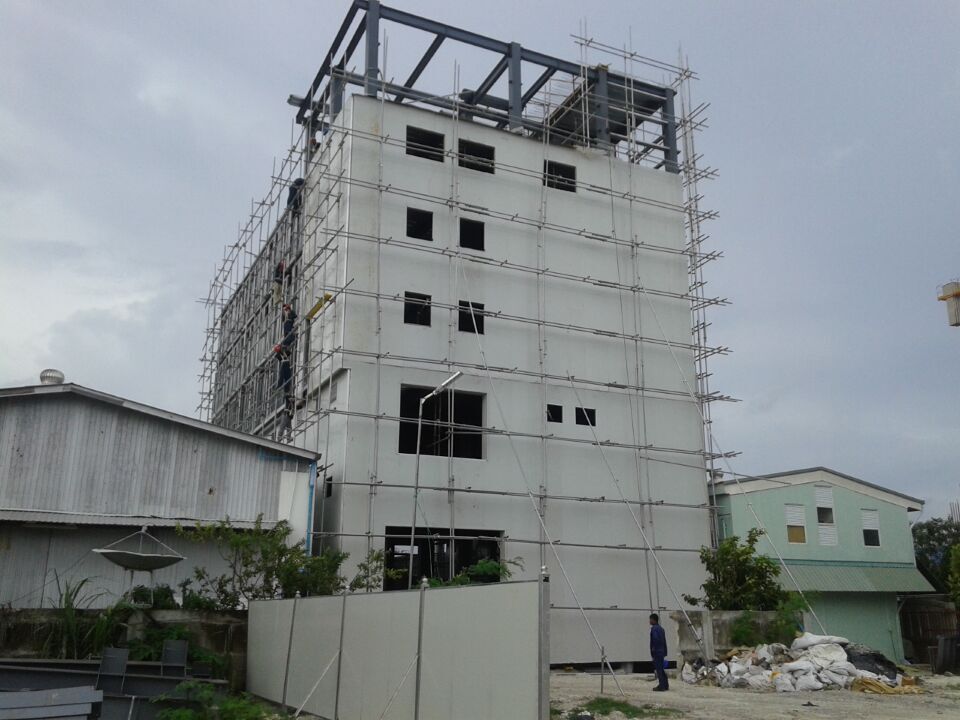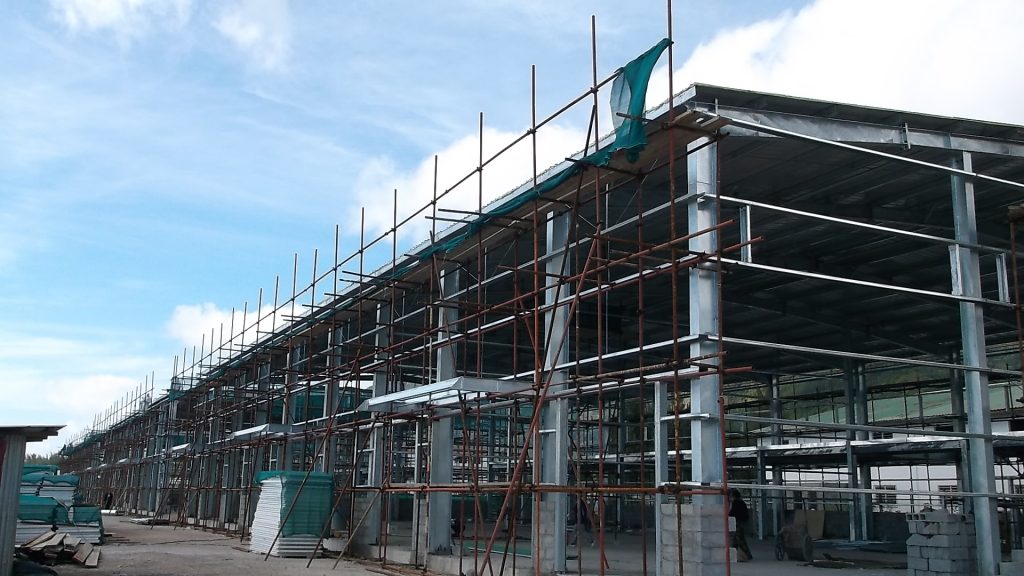Steel is highly durable but vulnerable to high temperatures, necessitating fire protection of enclosed structures according to code requirements and building function. Common methods include spray-applied, intumescent and board systems.
Spray-applied fireproofing utilizes a dry mix or wet cementitious slurry sprayed onto structural steel members to form a fire-resistant thermal barrier. Gypsum- or cement-based, it bonds tightly to provide one to three hour ratings once dried.
Application follows prescribed thickness specifications from fire tests. Products cure by hydration for strength. Quality control ensures complete coverage of flanges, webs, bolted connections and welds, especially overhead. Thickness probes help inspectors check compliance.

Intumescent coatings change volume upon heating, expanding to form an insulating char. Applied as thin liquid coatings, they provide long-term protection without large thicknesses if precisely applied.
Fire-resistant boards made of gypsum, vermiculite or calcium silicate attach directly to steel flanges for their rated duration. They resist abrasions better than spray but require skilled cutting, fitting and fastening around welds, bolts and other obstructions for a neat appearance.
Spray-on and rigid board systems meet code thickness specifications when properly installed. Some lab-test longer than required, providing “grace periods” if damaged. Inspectors assess removal/application requirements cautiously during renovations.
Passive protection like encasement uses lightweight or heavy concrete masonry. Floors contain steel as fire resistance is provided inherently from dense construction materials. However, their weight may require heavy-duty steel framing.

Intumescent and spray-applied coatings can maintain ratings longer through harsh environments. Careful surface preparation, primer coats and application procedures by certified workers deliver fire-rated assemblies for life safety. Inspection ensures protection quality.
Proper selection and installation of spray-applied, rigid board or other passive fireproofing systems safeguard steel structures according to designed ratings that exceed expected fire exposures to protect building occupants and contents.

Related news
-
Conducting Inspections of Steel Structures During Construction
2023-09-07 14:14:29
-
Designing Steel-Concrete Composite Floor Systems Effectively
2023-09-07 14:30:56
-
Best Practices for Welding Steel Components on Site
2023-09-07 11:54:41
contact us
- Tel: +86-532-88966982
- Whatsapp: +86-13793209022
- E-mail: sales@lidajituan.com


